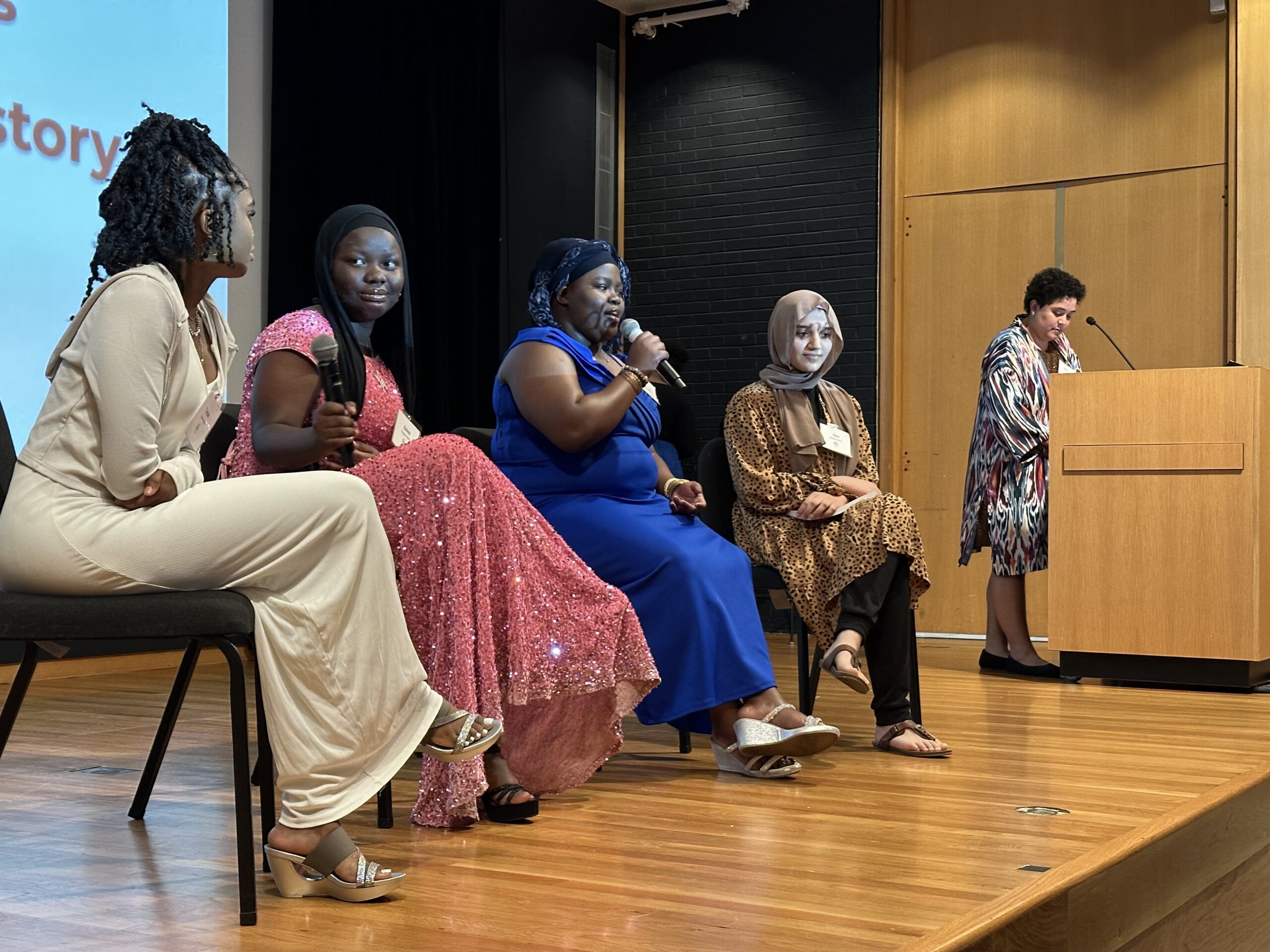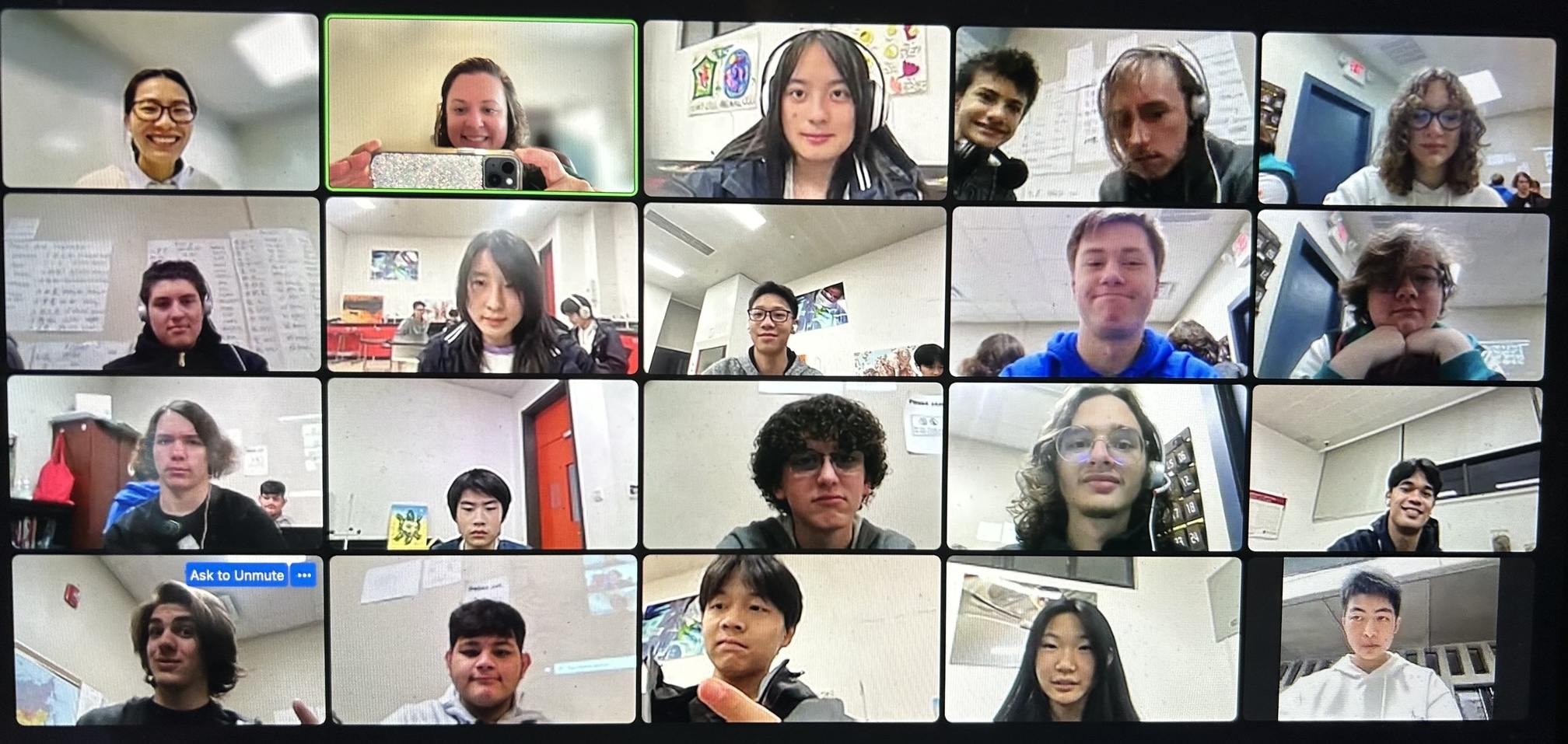We Can’t Put the Genie Back in the Bottle: Designing Next-Generation Education in the Time of Crisis

As a result of the coronavirus pandemic, people in North Carolina, the U.S. and around the world are confined to their homes with no clear idea of when life will shift to a new normal. While educators continue to adapt to conducting school during COVID-19, we’re being called to think differently about how we serve students, especially those who are in most need.
We’ve been confronted with issues of remote learning and equity within an emergency context. We know it’s not just about online learning. It’s more about what does it mean—from an equity standpoint—for a child not to have wi-fi and digital devices in their home while they are not physically attending school?
For the past two months, the Friday Institute for Educational Innovation has hosted a series of webinars with cross-sector participants addressing the question,“How can we engage the COVID-19 crisis to think futuristically about how we can meet the needs of all learners?” Some argue that it’s cliche to talk of leveraging a crisis for change, while others claim human beings generally need a sense of urgency to create momentum for change. I tend to fall into the latter group.
Dr. Anthony Jackson, superintendent of Vance County Schools, agreed with this perspective in the first webinar when he referred to our current situation as “the COVID opportunity rather than a crisis.” In part two of our webinar series focused on educational equity, James Ford, NC State Board of Education member and executive director for the Center for Racial Equity in Education, also saw this crisis as an opportunity for learning.
As North Carolina moves towards re-opening and re-designing what schooling could look like in the fall, here is some of what I’ve learned after facilitating these cross-sector discussions.
Embrace a New Understanding of Global Interdependence.
If there ever was doubt that we’re all globally interconnected, the COVID-19 crisis has helped remove that doubt. A key issue in educating our students is to help them understand this interconnection as they navigate demographic and cultural lines of difference to leverage collective expertise and collaborate globally. The crisis we’re facing with all of its ramifications is, in essence, an object lesson for the kind of complexity for which we should be preparing students. Chances are that our world will be increasingly more complex, not less, and engaging students in problem-solving skills to address our real-world dilemmas contributes to securing our future. Problem finding and problem-solving within ambiguous contexts needs to be a key aspect of schooling.
Offer Access to Low-Cost Broadband to Every Household.
We’ve had a laser focus on the issue of broadband in NC, but where will we actually end up? Based on data provided by the NC Department of Public Instruction, we know that there are approximately 225,000 students in North Carolina who don’t have access to the Internet at home, primarily because access to sufficient bandwidth is cost-prohibitive. An additional 75,000 students don’t have Internet access because it isn’t available where they live— at any price point. These two numbers represent approximately 20% of the students in North Carolina schools. Schools have made some efforts to mitigate these issues, such as opening up parking lots for students to use school wi-fi, providing cellular hotspots, and installing hotpots on busses parked in local communities. While these devices are good stopgaps, many of our students live in communities where none of the tools at our disposal will enable them to access the Internet in their communities.
An emerging technology that may help solve this “access gap” is Low-Earth Orbit (LEO) satellite services like StarLink, which can provide internet to students in the most remote areas of the state because they don’t rely on land-based wires or cellular towers for service. Even households that don’t sign up for these new services may benefit from increased access and increased competition, which may serve to drive down the cost of Internet access. Unless our system can address the digital divide, a significant portion of students will be further behind their peers in educational attainment than before COVID-19. Listen to Jeff Sural, Director of Broadband Infrastructure at the North Carolina Department of Information Technology, comment on barriers to broadband adoption during our third webinar.
Address Educational Inequities that are Ongoing and Amplified with Remote Learning.
Before COVID-19, the Leandro Report highlighted ongoing inequities across North Carolina’s educational system. Many of those inequities are now amplified through remote learning. Most agree that remote learning cannot replace the personal connections between teachers and their students. We’ve witnessed educators going the extra mile during this crisis to emphasize a personal touch through phone calls, drive-by home visits as well as virtual contact. Educators are finding unique ways to customize teaching and learning for vulnerable populations, (e.g., students living in poverty, English learners, students with learning differences and special needs).
Many parents and guardians face challenges with navigating and supporting the online schooling environment or being able to support their students in their content. Others are having to work to provide for their families at home or are still having to report to work, meaning that they may struggle to oversee and supervise their students’ learning. Additionally, many of our families are facing economic hardship right now, adding significant stress to the entire family. Listen to Dr. Avril Goggans, research and engagement manager for Future Ready Schools at the Alliance for Excellent Education, share her reflections on the role of school during webinar three.
Design School Time Differently.
Are some of the basic assumptions about schooling no longer valid in the face of the current pandemic? For example, physical classrooms may no longer be appropriate for large numbers of students. Students, especially older students, may engage in online modules in an asynchronous fashion with aspects of the curriculum being interest and curiosity-driven. School buildings are typically occupied at capacity for less than 15% of a full year. What would happen if some funds that traditionally are targeted for new construction and the upkeep of older buildings are redirected to increased human capital—to more teachers, counselors, instructional coaches and other support staff? How could students learn at home or in their community and use the time with teachers to workshop and to problem-solve and move from a lecture model to one where students have more 1-on-1 time with teachers. We’ve had a taste of asynchronicity with remote learning during the shutdown, and while clearly disruptive, we’ve experienced what’s possible and how it could enhance learning in the future. Is this, or some version of it, a sustainable model for teaching and learning? Listen to Dr. Vanessa Wrenn, director of digital teaching and learning at the NC Department of Public Instruction, discuss the use of school time during webinar three.
Provide Continuous Remote Learning Professional Development to Support Remote Learning Pedagogy.
Our teachers have been heroic as they became digital educators practically overnight. North Carolina educators may well have been more prepared than some across other states. In 2014, the North Carolina Department of Public Instruction and the Friday Institute worked to create a roadmap for the transition to digital learning: The North Carolina Digital Learning Plan. Since then the plan has been implemented to prepare teachers, principals, and coaches for the transition to digital-age learning models. We all recognize that developing online lessons during a crisis is not the same as well-designed online learning modules that are developed over time and aligned with standards and grade-level content. To assist educators as they continue to hone their remote learning skills, the Friday Institute and NC Department of Public Instruction have developed Instructional Design Principles for Remote Teaching and Learning and its companion piece Recommendations for Instructional Leaders.
How long have we talked about reimagining education but only achieved pockets of innovation—with the masses left to traditional models of teaching and learning? Within the last 10 weeks, we’ve experienced more educational change than at any other time in our history. Yes, it’s a bumpy ride, but I expect for years to come we will refer to education in terms of before and after the 2020 pandemic. The change that we’re experiencing grew out of necessity. Change, of course, can be effective, ineffective, or somewhere in the middle. It’s left up to us to shape and mold the change as we move forward so that we serve all students well. The genie is, indeed, out of the bottle—let’s make sure if there is any magic to be had, it’s leveraged for positive change to our educational system.

Hiller A. Spires, Ph.D., is the executive director of the Friday Institute for Educational Innovation and the associate dean and alumni distinguished graduate professor at the NC State College of Education.


